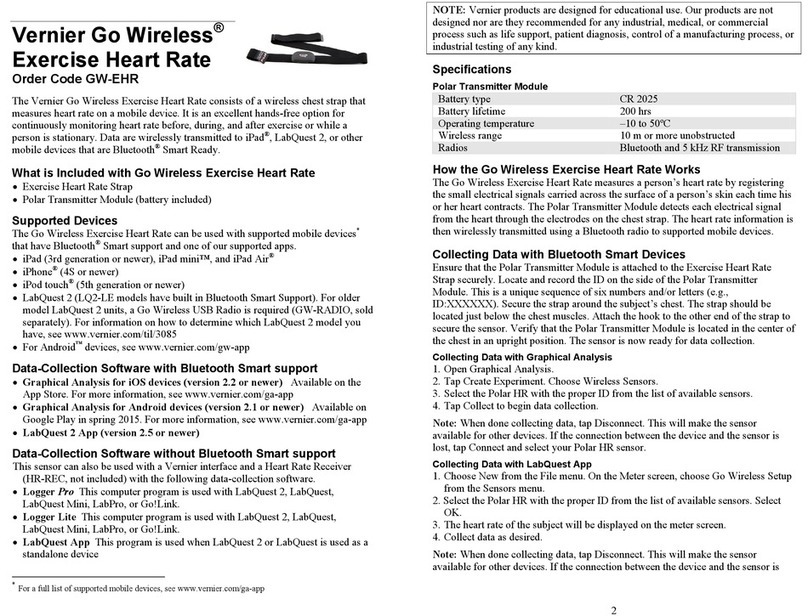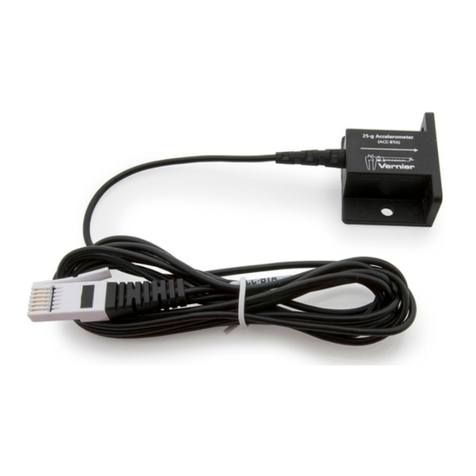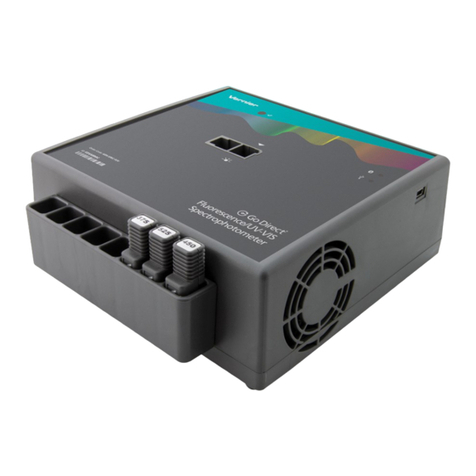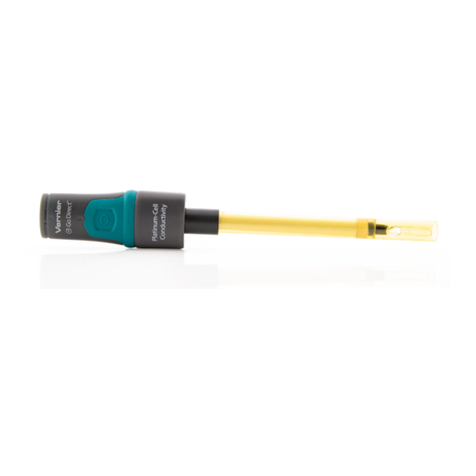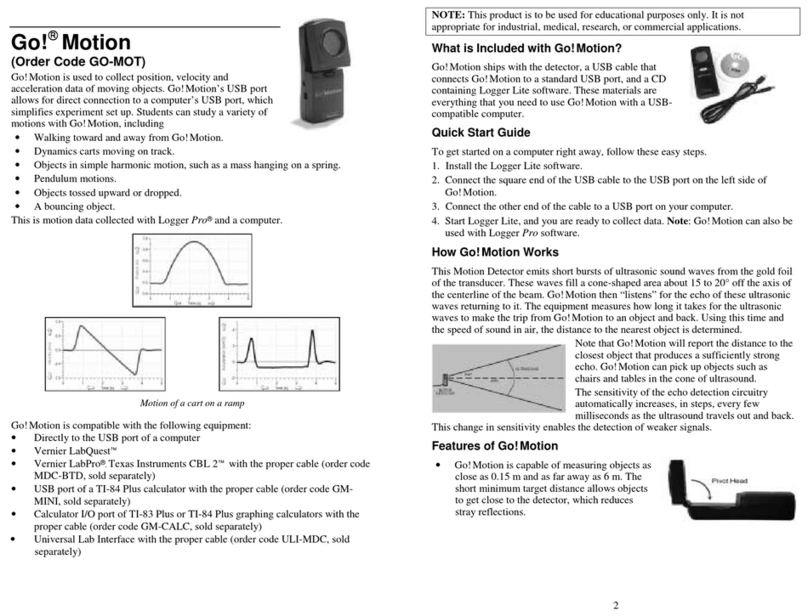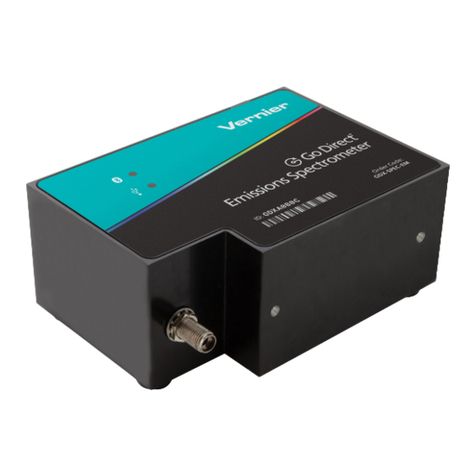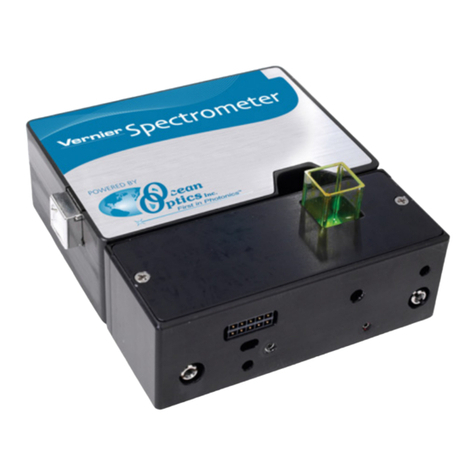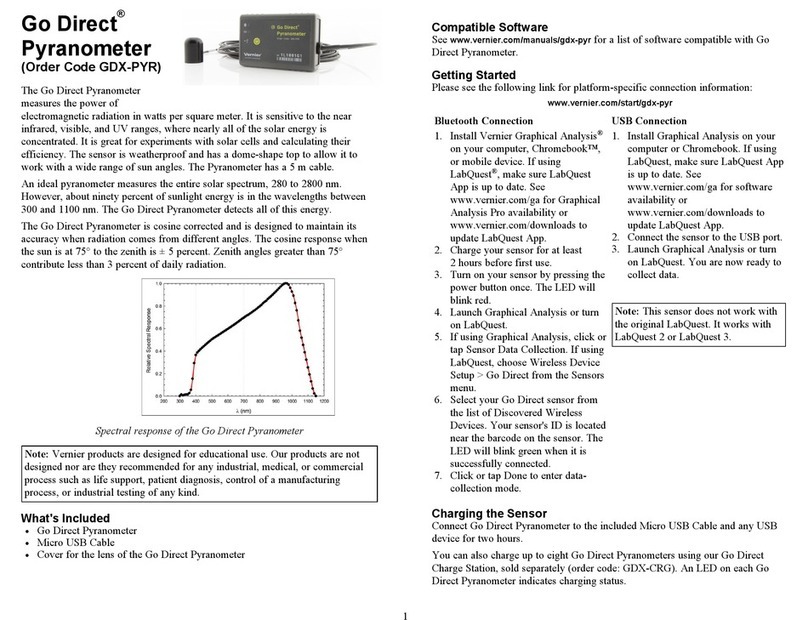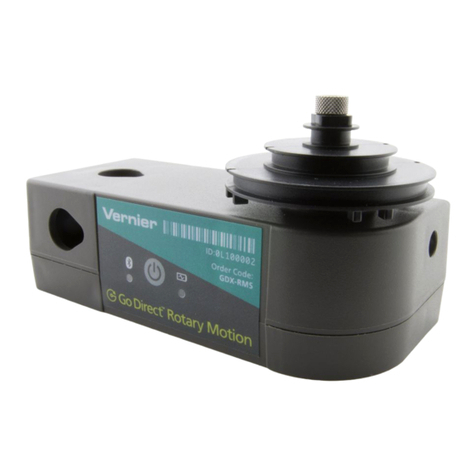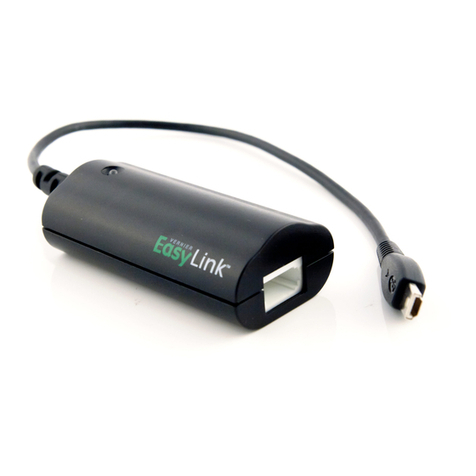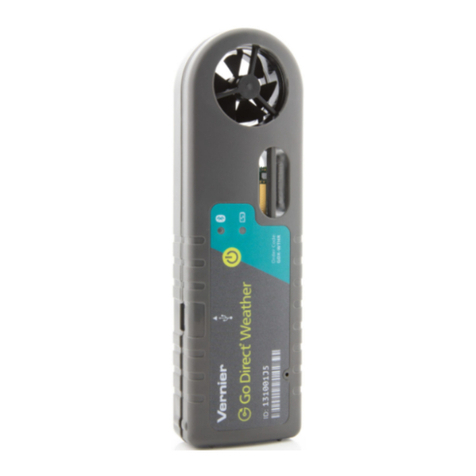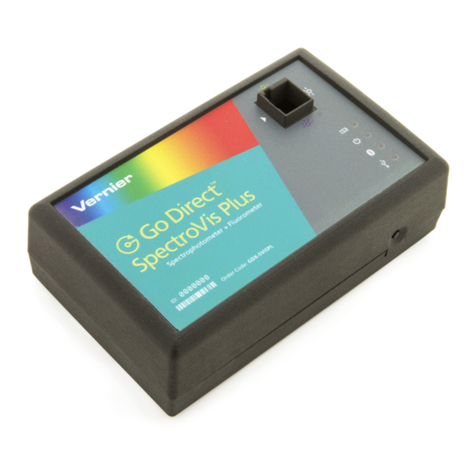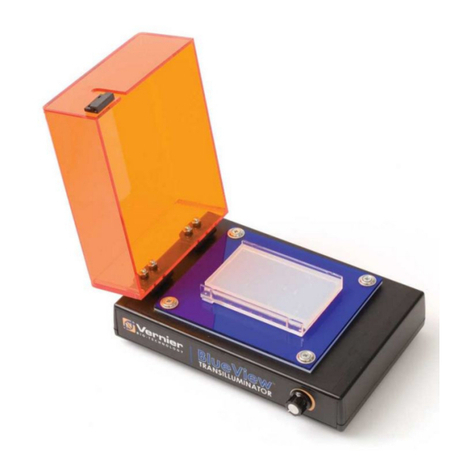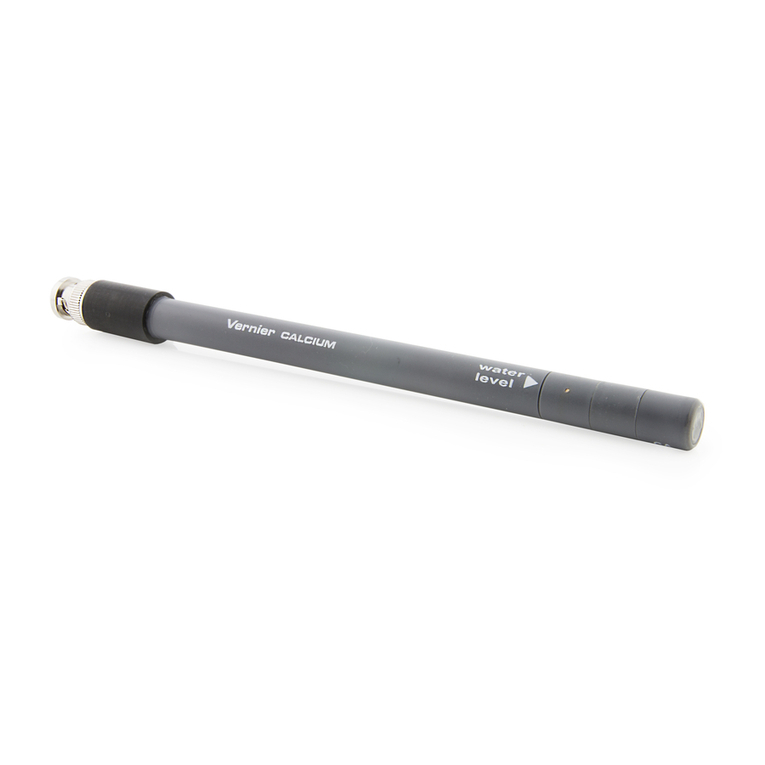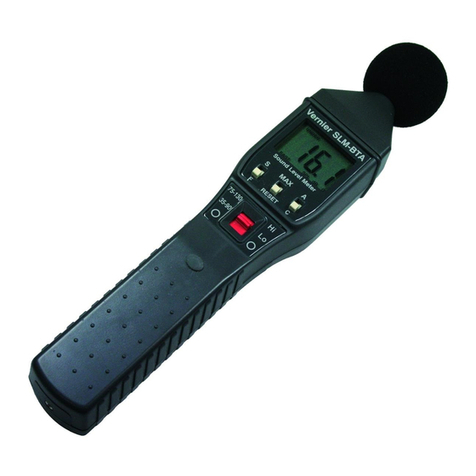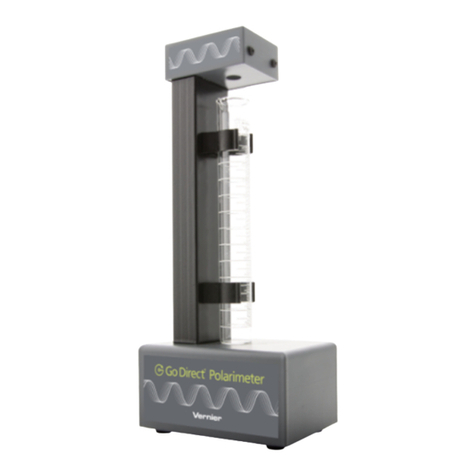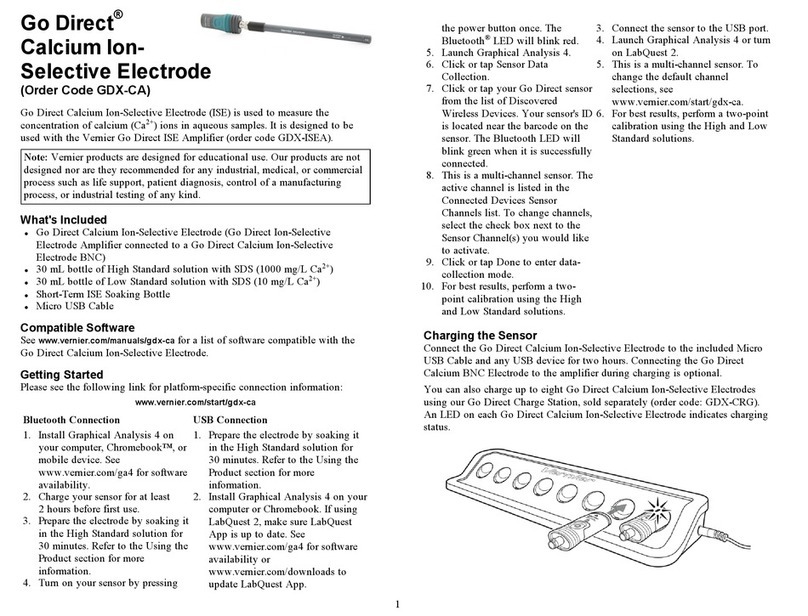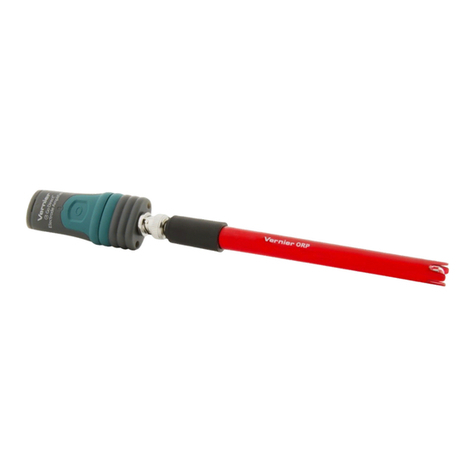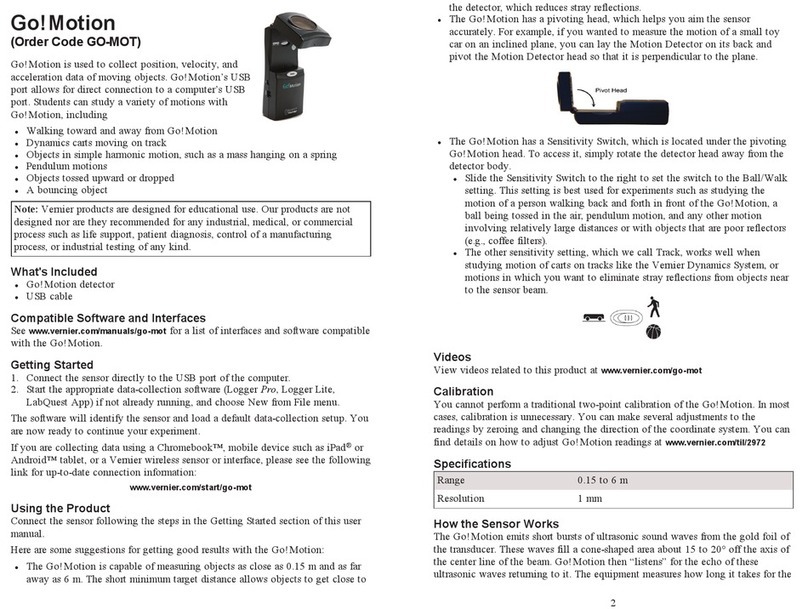
1
you plan to use the electrode outside the range of the standards provided, you
will need to prepare your own standards and use those for soaking.
Note: If the ISE needs to be transported to the field during the soaking process,
use the Short-Term ISE Soaking Bottle. Remove the cap from the bottle and fill
it 3/4 full with High Standard. Slide the bottle’s cap onto the ISE, insert it into
the bottle, and tighten.
For long-term storage, greater than 24 hours, make sure the sensor is stored in its
storage bottle with the sponge slightly damp.
Part II: Calibrate the ISE
Calibrating the Potassium ISE in Graphical Analysis 4
1. Connect the sensor according to the Getting Started section.
2. Click or tap the live readouts meter and choose Calibrate.
3. High Standard Calibration Point: The Potassium ISE should still be
soaking in the High Standard. The ISE should not rest on the bottom of the
container, and the 2 small white reference contacts near the tip of the
electrode should be immersed. Make sure no air bubbles are trapped below
the ISE.
4. Enter the concentration value of the High Standard (e.g., 100 for 100 mg/L)
in the edit box and click or tap Keep.
5. Low Standard Calibration Point: Remove the ISE from the High Standard,
rinse well with distilled water, and gently blot the ISE dry with a paper
towel. Place the ISE into the Low Standard. Make sure the ISE is not resting
on the bottom of the container, the white reference contacts near the tip of
the electrode are immersed, and no air bubbles are trapped below the ISE.
6. Enter the concentration value for the Low Standard (e.g., 1for 1 mg/L) and
click or tap Keep .
7. Click or tap Apply to complete the calibration process.
Calibrating the Potassium ISE in Logger Pro 3
1. Connect the sensor according to the Getting Started section.
2. Choose Calibrate from the Experiment menu and then click .
3. High Standard Calibration Point: The Potassium ISE should still be
soaking in the High Standard. The ISE should not rest on the bottom of the
container, and the 2 small white reference contacts near the tip of the
electrode should be immersed. Make sure no air bubbles are trapped below
the ISE.
4. Enter the concentration value of the High Standard (e.g., 100 for 100 mg/L)
in the edit box.
5. After the voltage reading for Reading 1 stabilizes (~2 minutes), click
.
6. Low Standard Calibration Point: Remove the ISE from the High Standard,
rinse well with distilled water, and gently blot the ISE dry with a paper
towel. Place the ISE into the Low Standard. Make sure the ISE is not resting
on the bottom of the container, the white reference contacts near the tip of
the electrode are immersed, and no air bubbles are trapped below the ISE.
Potassium Ion-
Selective Electrode
(Order Code K-BTA)
The Vernier Potassium Ion-Selective
Electrode is used to measure the
concentration of potassium (K+) ions in aqueous samples.
Note: Vernier products are designed for educational use. Our products are not
designed nor are they recommended for any industrial, medical, or commercial
process such as life support, patient diagnosis, control of a manufacturing
process, or industrial testing of any kind.
What's Included
lPotassium Ion-Selective Electrode, packed in a storage bottle
l30 mL bottle of High Standard solution with SDS (1000 mg/L K+)
l30 mL bottle of Low Standard solution with SDS (10 mg/L K+)
lShort-Term ISE Soaking Bottle
Compatible Software
See www.vernier.com/manuals/k-bta for a list of software compatible with the
Potassium Ion-Selective Electrode.
Getting Started
1. Prepare the electrode by soaking it in the High Standard solution for
30minutes. Refer to the next section for more information.
2. Connect the sensor to the interface (LabQuest Mini, LabQuest 3, etc.)
3. Start the appropriate data-collection software (Graphical Analysis, LabQuest
App, Logger Pro) if not already running. The software will identify the
sensor and load a default data-collection setup.
4. Perform a two-point calibration using the High and Low Standard solutions.
Refer to the next section for more information.
If you are collecting data using a Chromebook™, mobile device such as iPad®
or Android™ tablet, or a Vernier wireless sensor or interface, please see the
following link for up-to-date connection information:
www.vernier.com/start/k-bta
Preparing the Potassium ISE for Use
Note: Follow this two-part process before taking measurements with your ISE.
Part I: Soak the Electrode
Soak the electrode in the High Standard solution (included with the ISE) for
approximately 30minutes. The ISE should not rest on the bottom of the
container, and the small white reference contacts near the tip of the electrode
should be immersed. Make sure no air bubbles are trapped below the ISE.
Important: Do not leave the ISE soaking for more than 24hours. Important: If
